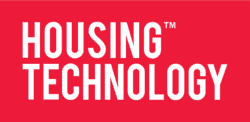As housing providers explore the different ways technology could be used to improve service delivery, many are considering how migrating away from traditional desktops to virtual desktops could provide an ideal solution. Even so, a PC on every desk can be a hard habit to break for some companies but perhaps 2012 will be the year when virtual desktops gain dominance? David Angwin from Wyse Technology puts forward a few of the arguments to win over any remaining doubters.
1. Cuts the maintenance costs of the desktop
It is estimated that up to 70 per cent of IT budgets are spent on maintenance and support. Choosing virtual desktops that require minimum or zero management creates savings that can be ploughed back into the business to develop revenue-making services, for example. The cost savings are high – one business was able to cancel a £500,000 PC maintenance contract because of desktop virtualisation. With VDI, any support issues can be handled remotely and take half the time of a PC support issue. Because they have no moving parts, new thin or zero clients are inherently more reliable and have an operational lifespan of a decade – two or three times longer than a PC – and don’t need replacing with each new wave of software.
2. Think real energy savings
You don’t need to be motivated by the zero or low carbon agenda to use the greater energy efficiency of virtual desktops to make your case as there are substantial cost savings to be made. For example, since switching to VDI one company has reported that its energy consumption fell by 312,539 kWh per year, or roughly £32,000 in savings.
3. End-user resistance is a myth
Advances in virtualisation mean that end-users notice no difference when their PC is swapped for a thin or zero client, even with the richest multi-media applications. In fact, instant start-ups and no problems with malware mean the experience actually is an improvement on the previous PC. There are other advantages to win over the business – for example the ability to log into your personal desktop wherever you are in the organisation often results in a more flexible and collaborative working culture.
4. Smartens up the office
PCs have tended to clutter up offices. Moving to VDI means desk and office space is freed up. Thin or zero clients also are quieter and generate less heat, resulting in a more comfortable and productive working environment. This comes with financial benefits because large numbers of PCs produce a lot of hot air that has to be cooled and thus adds to the load on the air-conditioning systems.
5. Don’t be tempted to spare a few PCs
The business case for VDI is maximised by virtualising the majority of desktops. Leaving one or more PCs undermines the financial and operational benefits significantly because of the extra support burdens imposed by their presence. The limits on VDI are being addressed as more applications become suitable for virtualisation, and new generations of thin or zero clients that replicate the performance of the most high-performance workstations are bridging the final gaps.
6. Taking IT out of the office
Often housing providers need IT to be on the front-line of their work in the community. With the public sector under even tougher scrutiny about how they handle sensitive information, data protection is very much at the top of the agenda especially when data breaches damage public trust and incur heavy fines. With no data ever stored on the device, thin or zero clients have data protection as an integral feature that mitigates against the risks of theft or accidents, especially when combined with the latest authentication technologies.
7. Breaking the vicious PC replacement cycle
Many companies have ageing desktop estates because they avoided Microsoft Vista and maintained their earlier Microsoft environments for longer than planned. Now Windows 7 offers a safe haven and we are seeing migration strategies happening on a large scale. But in making this move, why stick with conventional PCs? With an end-user performance equivalent to, if not better than, and a longevity three to four times longer than a PC, a desktop strategy based on thin or zero clients enables long-term budget planning.
David Angwin is EMEA marketing director for Wyse Technology.

